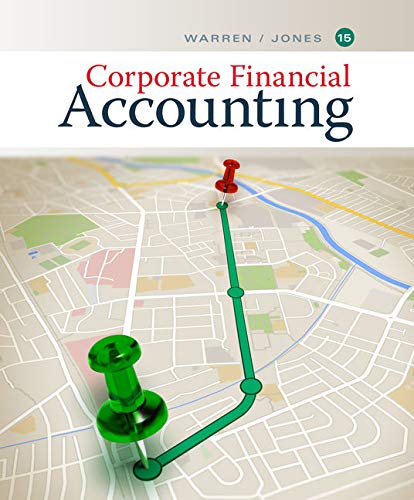
Internal Control: Internal control refers to the policies, and plans of the business organization along with other measures with a view to safeguard its assets, encourage the employees to adhere to the plans, to improve on the operational efficiency, and to ensure correct and reliable accounting information. Internal control is a process which ensures continuous reliability of accomplishment of a company’s objectives, related to operations, financial reporting, and in conformity with laws and regulations.
The following are the some of the internal control procedures:
- Competent personnel, rotating duties, and mandatory vacations
- Separating responsibilities for related operations
- Separating operations, custody of assets, and accounting
- Proofs and security measures
To state: The general weakness in SG’s internal controls contributed to the occurrence and size of losses.
Want to see the full answer?
Check out a sample textbook solution
Chapter 7 Solutions
Cengagenowv2, 1 Term Printed Access Card For Warren/jones’ Corporate Financial Accounting, 15th
- Total factory Overhead costs would bearrow_forwardCalculate the ending balance of accounts receivablearrow_forwardBrightstar Financial Services recorded several financial transactions during the period. The company received $38,500 in cash from credit customers and allowed $3,200 in sales discounts. Additionally, $2,100 in bad debts were written off. Given that the beginning balance of Accounts Receivable was $92,000, calculate the ending balance of Accounts Receivable. Helparrow_forward
- DuraWeave Textile Mill processes raw cotton into premium cleaned cotton. The raw cotton costs $6.50 per pound, but during the cleaning process, there is a 40% loss due to impurities and waste. After cleaning, the processing cost is $9.75 per pound of cleaned cotton. Additionally, a quality bonus of 12% is applied to the final cost of the cleaned cotton. Calculate the total cost of processing 250 pounds of raw cotton.arrow_forwardWhat distinguishes capacity utilization accounting from volume measures? A. Standard measures work fine B. Resource availability impacts supplement usage records C. Capacity remains constant D. Usage numbers tell everything MCQarrow_forwardI need help finding the accurate solution to this general accounting problem with valid methods.arrow_forward
 Auditing: A Risk Based-Approach (MindTap Course L...AccountingISBN:9781337619455Author:Karla M Johnstone, Audrey A. Gramling, Larry E. RittenbergPublisher:Cengage Learning
Auditing: A Risk Based-Approach (MindTap Course L...AccountingISBN:9781337619455Author:Karla M Johnstone, Audrey A. Gramling, Larry E. RittenbergPublisher:Cengage Learning Auditing: A Risk Based-Approach to Conducting a Q...AccountingISBN:9781305080577Author:Karla M Johnstone, Audrey A. Gramling, Larry E. RittenbergPublisher:South-Western College Pub
Auditing: A Risk Based-Approach to Conducting a Q...AccountingISBN:9781305080577Author:Karla M Johnstone, Audrey A. Gramling, Larry E. RittenbergPublisher:South-Western College Pub College Accounting, Chapters 1-27AccountingISBN:9781337794756Author:HEINTZ, James A.Publisher:Cengage Learning,
College Accounting, Chapters 1-27AccountingISBN:9781337794756Author:HEINTZ, James A.Publisher:Cengage Learning,


